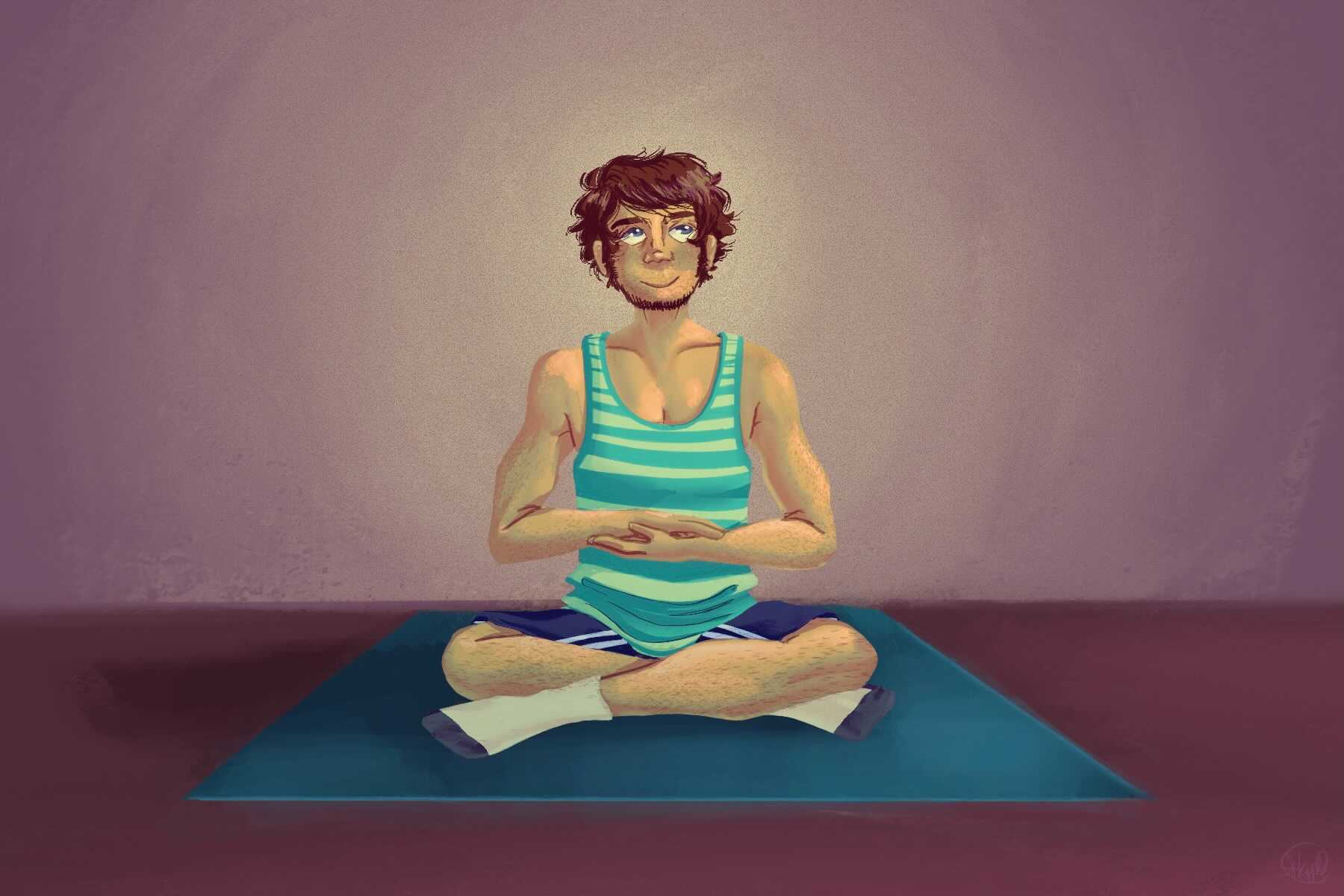Is your spine locked tight and are there squeezing pains in your glutes? Are you giving your all to stop thinking? Everyone raves about the benefits of meditation, but you just don’t seem able to make it work for you. Well, that’s probably because you’re trying to “make” it work for you. Sleeping supine on a bed may be the traditional way to sleep, but we all know that everyone sleeps in their own distinct way. Meditation follows this same pattern, where you build your routine according to who you are.
If you answered “yes” to the first question, you are using the ubiquitous lotus posture practiced by yogis from India as well as your general yoga enthusiast. While the lotus posture has some of its own specific benefits, such as increasing blood flow and loosening the hips, it isn’t the only way to meditate. We often hear people say that mediation doesn’t work for them or it’s too complicated. But did you know that you and everyone else meditate all the time?
Meditation is the common practice of focusing the mind’s attention to achieve clear mental and emotional states. Therefore, this practice looks different for a multitude of people. Whether you are playing video games, reading books, working out or creating your own business, we all have our own ways of calming ourselves. When the mind is at peace, we experience the most joy of all. Misconceptions about meditation often arise when we have too much stimulation in our lives and try the one-size-fits-all way of relaxing. This is with good reason, of course, because not all of us are at peace when outputting energy into exhaustive exercise or the ambitious labor that crafts your life’s work. However, when attempting the route of traditional meditation, we must remember that we are but neophytes in this realm. Thus, we shouldn’t expect perfection on the first go.
How Do I Begin Meditation?
The guidelines for meditation are few and flexible because you ultimately craft your own routine, so feel free to bend them to your liking. You want to start by setting your intention. When you give your mind a target, it will do much better at aiming than if you just jump straight in. Either out loud or in your head, start by saying, “I intend to heal, calm down,” etc.
Next, Make Sure That You Are in a Comfortable Position!
Sometimes you have too much energy, but you still want to diffuse it and relax. Great — so maybe go for a walk or run! But if that’s not your style, sit in a chair or lay flat on your favorite surface. Meditating with a relaxed, flat spine allows chi to flow through your seven energy centers, the chakras that govern our vitality. The main ingredient is to ensure that your spine is straight. According to scientific research, this approach increases blood circulation and reduces stress on the body so the mind can relax fully. If you tend to fall asleep easily, I suggest causing a slight discomfort in the body, such as using the lotus posture or lying on the floor.
Time to Close Your Eyes.
This step is obviously not necessary for walking or running meditations, but closing your eyes offers serious benefits for resting meditation! Limiting the light that enters your eyes allows you to enter your inner world and cut off external stimuli. From there, you can engage in creative visualization and attune your mind to whatever your intended goal is. For instance, imagining yourself in a peaceful rain forest or living without the pain caused by an ailment are both fair game. This guideline aims to foster a mentality of mind over matter, thus helping to recreate your life within this serene period of time.
Slow Down Your Breathing
Notice that when you are angry, tired or stressed in any way, your breathing is faster than average. So, imagine what would come of consciously controlling your breath so that it will be slower than your normal heart rate. You activate your parasympathetic nervous system, which induces healthy digestion and healing. When you maintain a healthy flow of about five seconds per inhale and exhale, your mind and body are in harmony with one another, which slows your breathing.
What’s Next?
Even after following these loose guidelines, there is still one integral piece of the formula. It is simply to observe your thoughts, and to not zone out completely. As a beginner, it will seem like your anxiety has increased because you can’t help but obsess over every issue on your mind. The key is to stop trying to avoid your thoughts altogether; just try not to react to these thoughts.
Instead, simply observe what is on your mind and how those thoughts make you feel. This deep introspection allows you to contact your subconscious mind, which contains both the root of our issues and our most profound emotions. But try to maintain this practice for as long as you can. No one is forcing you to do this for 30 minutes or even five minutes. Even one second of it will be beneficial because you’ve already decided to try to engage with your emotions.
Does Meditation Get Easier?
Of course, consistency will save you the most here. It’s the same as attempting to work out for the first time in six months. The first session may leave you questioning why you would subject yourself to this dreadful practice, but coming back to it once a day, once a week, or however frequently you would like will prove profoundly transformative for all facets of your life. As mentioned earlier, this is YOUR practice and can be modified to YOUR liking. These guidelines are merely the foundation for any routine.
You can also choose to add recorded affirmations, calming music, binaural beats and/or aromatherapy to your meditation sessions if it suits you. Whether it be right before bed, or when you wake up, you are always able to dip into bliss in your own way. With nothing externally present, you will become the genuine regulator of your emotional state. So, throw bias out the window and step up. When you step up to fear (of change, discomfort, naivety), you will grow to be a better version of yourself!

















